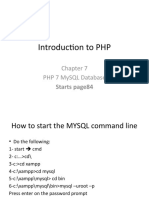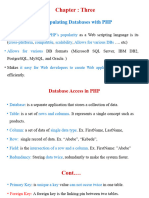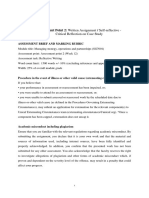0% found this document useful (0 votes)
14 views12 pagesPHP MySQL Database Guide
MySQL is a fast, reliable, and easy-to-use database system that supports both small and large applications, developed by Oracle Corporation. The document provides PHP code examples for connecting to MySQL, creating databases and tables, inserting, selecting, updating, and deleting data, as well as using various MySQLi functions. It also covers important SQL syntax and commands for managing data within MySQL databases.
Uploaded by
lokbasnet368Copyright
© © All Rights Reserved
We take content rights seriously. If you suspect this is your content, claim it here.
Available Formats
Download as PDF, TXT or read online on Scribd
0% found this document useful (0 votes)
14 views12 pagesPHP MySQL Database Guide
MySQL is a fast, reliable, and easy-to-use database system that supports both small and large applications, developed by Oracle Corporation. The document provides PHP code examples for connecting to MySQL, creating databases and tables, inserting, selecting, updating, and deleting data, as well as using various MySQLi functions. It also covers important SQL syntax and commands for managing data within MySQL databases.
Uploaded by
lokbasnet368Copyright
© © All Rights Reserved
We take content rights seriously. If you suspect this is your content, claim it here.
Available Formats
Download as PDF, TXT or read online on Scribd
/ 12





















































































